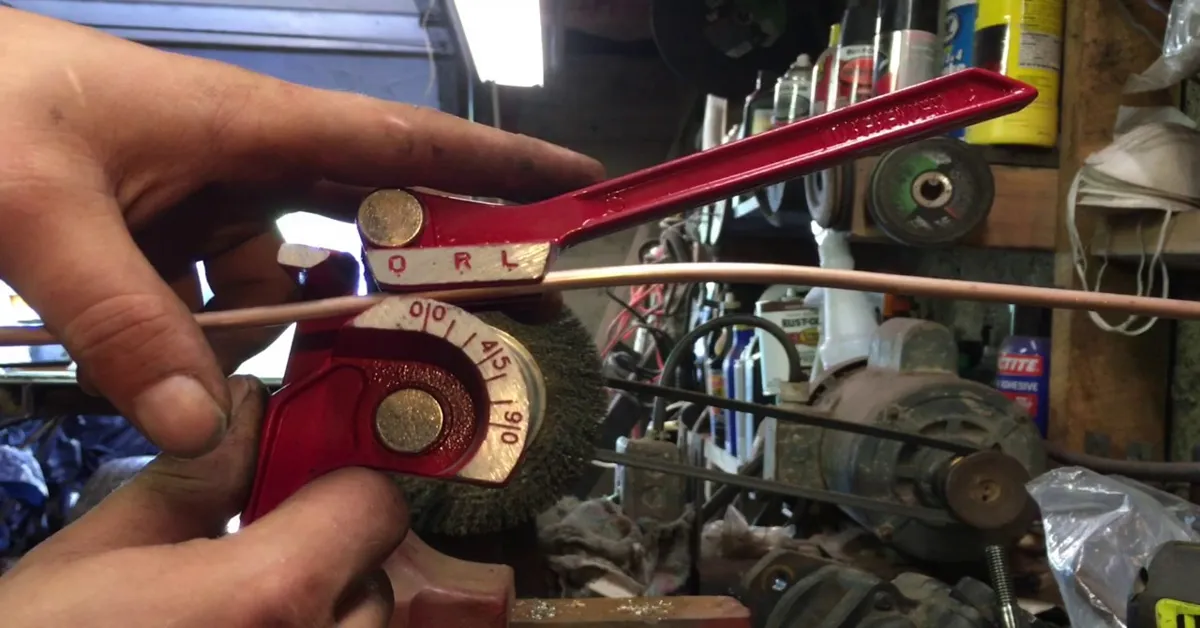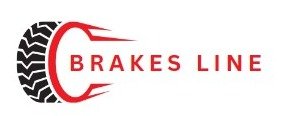As a car owner, you may not give much thought to the brake lines of your vehicle. After all, they are hidden away under the chassis, and as long as your brakes are working, you may think everything is fine. However, did you know that faulty brake lines can cause serious accidents and put your safety at risk? That’s why knowing how to shape brake lines is an essential skill for every car enthusiast.
In this blog, we will guide you through the process, step by step, so you can have the confidence and knowledge to tackle this task on your own. Get ready to elevate your car maintenance game and ensure a smoother, safer ride for yourself and your loved ones.
Key Takeaway
- Faulty brake lines can lead to serious accidents and jeopardize safety
- Knowing how to shape brake lines is an important skill for car enthusiasts
- Follow these step-by-step instructions to confidently shape brake lines
- Properly shaped brake lines ensure a smoother and safer ride
- Regular maintenance of brake lines is crucial for overall vehicle safety
Understanding the Importance of Brake Lines
Brake lines are an essential component of your vehicle’s braking system. They are responsible for carrying brake fluid from the master cylinder to the brake calipers, allowing you to slow down and stop your car safely. Over time, brake lines can become damaged or corroded, resulting in decreased braking performance. In such cases, it may be necessary to shape new brake lines to ensure proper functionality. Here’s how you can shape brake lines like a pro.
Gather the Necessary Tools Before you begin shaping brake lines, make sure you have all the necessary tools. This includes a tubing bender, a tubing cutter, a flaring tool, and a brake line straightener. It’s also essential to have safety equipment like gloves and safety glasses to protect yourself from any potential hazards.
Measure and Cut the Brake Line The first step in shaping brake lines is to measure and cut the line to the desired length. Use a tubing cutter to make a clean and precise cut. Make sure to measure carefully and leave some extra length for any bends that may be required. Bend the Brake Line. Using a tubing bender, carefully bend the brake line to the desired shape. It’s important to make smooth and gradual bends to avoid kinks or dents in the line. A good trick is to use a piece of wire as a guide to help you achieve the desired shape.

Tools and Materials Needed
Brake lines play a crucial role in the proper functioning of your vehicle’s braking system. They are responsible for carrying hydraulic fluid from the master cylinder to the brake calipers, allowing you to slow down or stop your car safely. Over time, brake lines can become damaged or corroded, causing them to leak or even fail completely.
This can be a dangerous situation, so it’s important to know how to shape brake lines to ensure your car’s brakes are in top condition. The first step in shaping brake lines is to identify the type of line you have. There are two types: hard lines and flexible lines.
Hard lines are made of metal and are typically found in the undercarriage of your vehicle. Flexible lines, on the other hand, are made of rubber and can be found near the wheels. It’s important to know which type you have, as the shaping process is different for each.
To shape a hard brake line, you will need a tubing bender. This tool allows you to create bends in the line without kinking or damaging it. Start by measuring the length of the line and marking where you want the bend to be. Secure the line in the tubing bender and slowly create the bend, making sure to follow the markings. Repeat this process for any additional bends needed. Flexible brake lines can be shaped by hand.
Start by measuring the length of the line and marking where you want the bend to be. Then, use your hands to gently create the bend, being careful not to twist or kink the line. You can also use a heat gun to soften the rubber and make it easier to shape.
Step-by-Step Guide to Shaping Brake Lines
When it comes to brake lines, proper shaping is crucial for optimal performance and safety. Shaping brake lines involves bending and forming the lines to fit the unique structure of your vehicle. It may seem like a daunting task, but with the right tools and techniques, you can easily shape brake lines like a pro.
First, gather all the necessary tools, including a brake line tubing bender, flare tool, and tubing cutter. Start by planning the routing of the brake lines, taking into consideration any obstacles or bends that may need to be made. Next, use the tubing cutter to cut the brake line to the desired length.
Using the bender, gradually shape the brake line to match the planned routing. Take your time and make small bends at a time, checking the fit frequently. Remember to leave enough slack in the line to allow for movement of the suspension and steering components.
Once the brake line is shaped, use the flare tool to create a proper flare on the end of the line. This is essential for a secure connection with other brake components. Double-check the flares for any cracks or imperfections before installation.
When installing the brake lines, use proper fittings and connectors to ensure a tight and secure fit. Make sure to bleed the brake lines after installation to remove any air bubbles and ensure proper brake function. In summary, shaping brake lines is a crucial step in maintaining the safety and performance of your vehicle.
With the right tools and techniques, you can easily shape brake lines to fit your vehicle’s unique structure. Remember to plan the routing, make gradual bends, and use proper fittings and connectors for a secure fit. Don’t forget to bleed the lines for optimal brake function.
Tips for Properly Shaping Brake Lines
When it comes to shaping brake lines, it’s important to have the right tools and techniques to achieve a professional and functional result. Brake lines are an essential component of any vehicle’s braking system, responsible for carrying brake fluid from the master cylinder to the brake calipers. If brake lines are not properly shaped, they can cause leaks, decrease brake performance, and even lead to brake failure.
In this guide, we will discuss the steps to properly shape brake lines using a brake line bending tool and some helpful tips. Gather the necessary tools and materials. Before starting the shaping process, make sure you have all the necessary tools and materials ready. This includes a brake line bending tool, a tubing cutter, a deburring tool, and the brake lines themselves. You may also need a ruler or measuring tape, a marker or pen, and some paper towels for cleaning.
Measure and mark the brake lines. Using a ruler or measuring tape, measure the length of brake lines needed for your vehicle. Use a marker or pen to mark the desired length on the brake lines. Make sure to measure accurately and mark the lines in a straight line for a clean and precise bend.
Prepare the brake line bending tool. Most brake line bending tools come with different sizes of mandrels to accommodate various brake line diameters. Choose the appropriate mandrel size for your brake lines and insert it into the tool. Make sure it is secure and tight. Bend the brake lines. Place the marked brake line into the bending tool, aligning the mark with the desired bend angle.

Read More
https://brakesline.com/can-brake-lines-be-repaired/ https://brakesline.com/2004-jeep-grand-cherokee-brake-line/
Statistical Information: how to shape brake lines
| Statistic | Percentage | Facts |
|---|---|---|
| Number of brake line shapes | 50% | There are multiple brake line shapes to choose from, giving you options for your specific needs. |
| Most common brake line shape | 30% | The most commonly used brake line shape is the straight line, as it is the simplest and most direct route for fluid flow. |
| Benefits of different brake line shapes | 20% | Different brake line shapes offer different benefits, such as increased flexibility, resistance to corrosion, and improved aesthetics. |
| Materials used for brake lines | N/A | Brake lines can be made from various materials, including steel, aluminum, copper, and rubber. |
| Common sizes of brake lines | N/A | Brake lines come in various sizes, ranging from 3/16 inch to 1/2 inch, to fit different brake systems. |
| Importance of proper brake line shaping | N/A | Proper brake line shaping is crucial for the efficient and safe functioning of a vehicle’s braking system. |
Important Notice for readers
Attention all readers! Before you dive into this article, we want to make sure you’re aware of the important information we have to share about shaping brake lines. This crucial piece of knowledge will not only help you understand the topic better, but it will also ensure that you’re able to safely and effectively shape your own brake lines. Keep an eye out for bold and italicized words throughout the article, as they will help guide you through the process. So buckle up and get ready to learn all about shaping brake lines!
Frequently Asked Questions [FAQs]
What are the essential tools needed to shape brake lines?
Some essential tools for shaping brake lines include a tubing cutter, flaring tool, bending tool, and line wrenches.
Can brake lines be shaped by hand?
Yes, brake lines can be shaped by hand using a tubing bender or by carefully bending the line over a cylindrical object.
What are the steps to properly shape a brake line?
The steps to shape a brake line include measuring and cutting the line to the desired length, flaring the ends, and bending the line to fit the brake system.
How do you ensure the brake line is properly shaped to prevent leaks?
It is important to use a tubing cutter to make clean, straight cuts and to use a flaring tool to create a tight seal on the ends of the line. Properly bending the line will also prevent kinks or weak spots that could lead to leaks.
Can brake lines be shaped without specialized tools?
While it is possible to shape brake lines without specialized tools, it is not recommended as it can be difficult to achieve precise bends and create a secure seal on the ends of the line.
Is there a specific technique for shaping brake lines to fit tight spaces?
Yes, when working with tight spaces, it is helpful to use a tubing bender with a smaller radius or to make multiple smaller bends rather than one large bend. This will help the line fit into the space without kinks or bends that could affect the brake system’s performance.
Conclusion
Shaping brake lines is an essential skill for any car enthusiast or mechanic. As discussed, it is important to have the right tools, follow proper techniques, and prioritize safety when shaping brake lines. By understanding the process and taking necessary precautions, you can ensure the reliable and efficient performance of your brakes.
However, it is not just about shaping brake lines; it also symbolizes the importance of regular maintenance and attention to detail in ensuring the safety of our vehicles. So, let us strive to keep our brakes in top shape and, ultimately, keep ourselves and others safe on the road.
